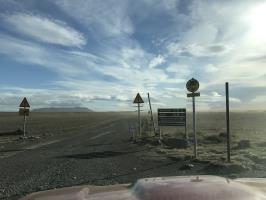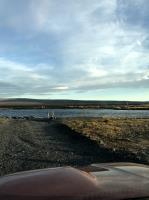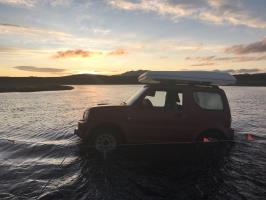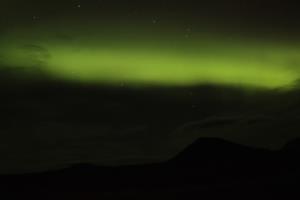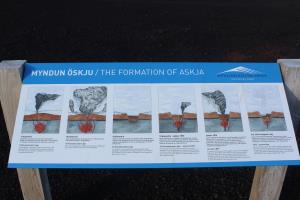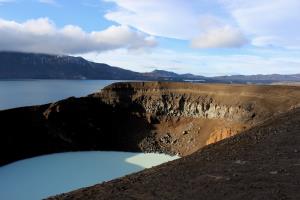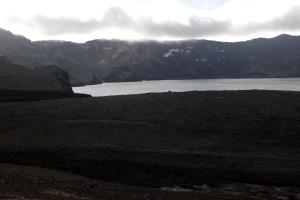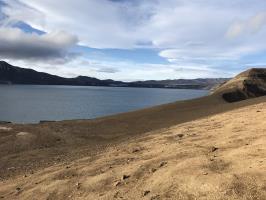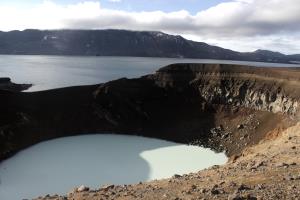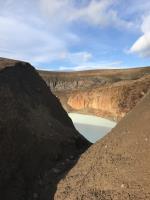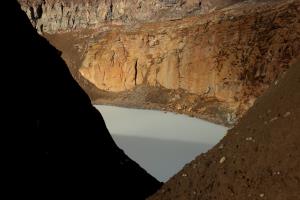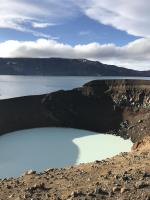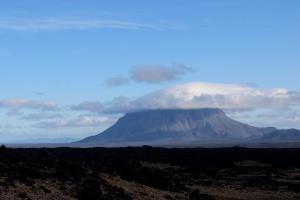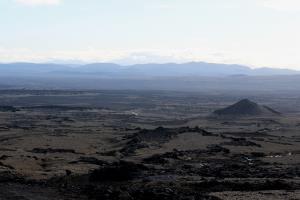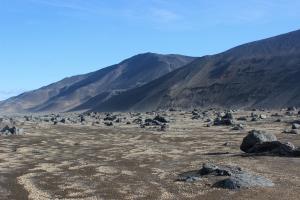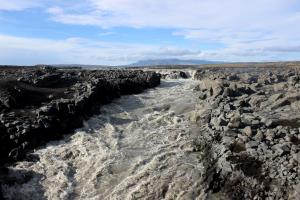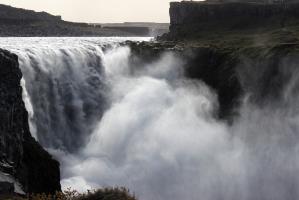Impression
Askja is a caldera situated in a remote part of the central highlands of Iceland. It contains Öskjuvatn, the second deepest in Iceland, and Víti, a smaller lake.
Getting to the caldera proved to be a challenging experience. I became stuck while crossing a large river and had to call for emergency help. Luckily, the CEO of Vatnajökull National Park, was passing by me within an hour of getting stuck before a park ranger came to assist.
Being Icelandic, the CEO was readily prepared with multiple ropes and a vehicle capable of pulling the rope while attached to my vehicle. It took two attempts, while wading through fast moving ice cold water in the dark but we were able to get the vehicle to land.
Once on land, I realized the back right tire had gone flat and foretunately we were able to change the tire out. I decided to continue, passing more rivers in the dark, to a remote campsite about 3 hours or more from the nearest paved road.
I am very grateful to have been saved by someone, my vehicle was taking on water and my clothing was getting wet. I believe I had gone too fast through the river and the air vent on the tire became damaged by rocks in the process. Had I strayed from the path set by a long rope, the engine would have flooded, completely stranding the vehicle, probably making all of my clothes wet and possibly leading to hypothermia.
Once I finally got there, the lakes were simply amazing, there is lava under them and they are surrounded by steaming vents. Askja is one of the most interesting geological formations in all of Iceland. I am pleased that I made it to the lake without any permanent damage to the vehicle or myself.
Icelandic people are kind and helpful, they live in a challenging environment. Learn from their level of preparedness and take all advice they give regarding the road conditions and driving techniques. Depending on the time of year and day, you may not see anyone on this road.
Tips For Driving To Askja
- Bring enough food and water for several days
- Fill up your gas tank to the maximum level, the drive is very long in each direction
- Make sure to check the road conditions for the route(s) you intend to take on Road.is, also check the weather on Safetravel.is
- When crossing the river, go through in a low gear (if driving an automatic, put in "L" before crossing the river)
- Drive slowly in low gear, about 5 kilometers per hour
- Don't change gears while driving in the river
- Read all signs about the river, each one is different
- Cross the river facing the direction of the water, do not drive upstream
- Make sure the vehicle is a 4x4 capable of crossing F Roads
- Check with the park ranger before attempting to drive on an F Road and have their number in the case you need assistance
- If possible, bring ropes capable of pulling the vechicle out of the water, not only for yourself but someone else (at least know how/ where a rope would go on your vechicle)
- If stuck, make sure to keep the engine running!
- Have a spare tire and the ability to use it
- Generally, cross the river where you can see the ripples in the current, this is usually the shallowest part
No Comments
